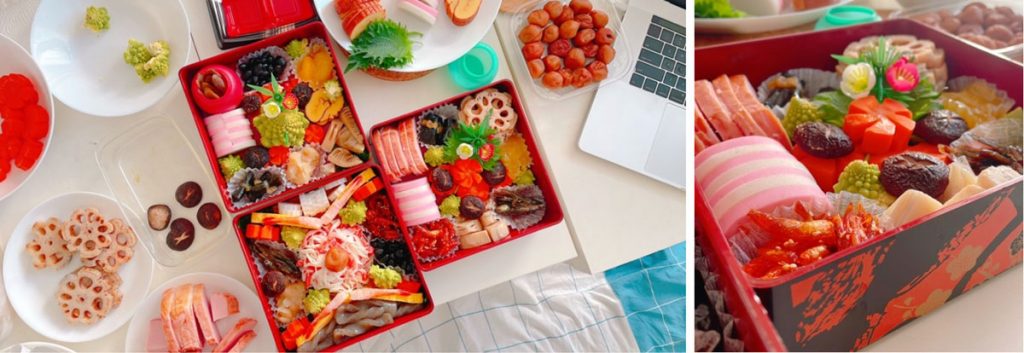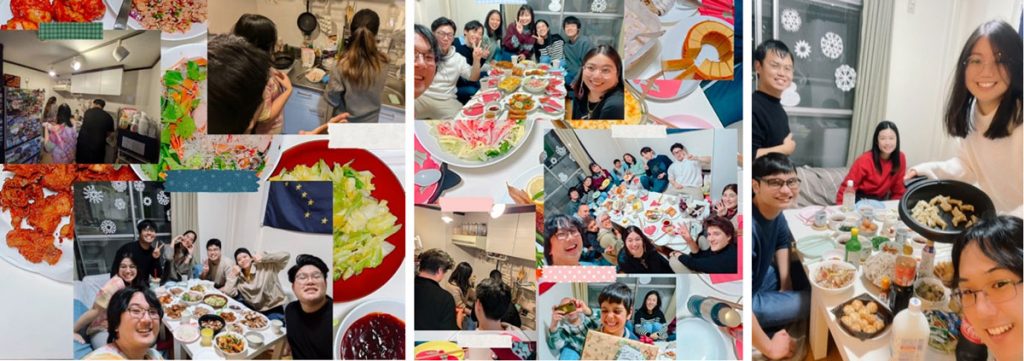While studying here, I learned that winter break in Japan coincides with the Christmas holidays, even for international programs. It typically runs from December 27 to January 4th, offering about a week of break. If you plan to return home during this period, be prepared for potentially expensive airplane tickets. Staying in Japan is often more affordable and presents a wealth of exciting activities.
Exploring Christmas markets

Despite the lack of a dedicated Christmas break, Tokyo hosts numerous festive markets throughout the month of December. Some are free to enter, while others require an entrance fee. I love to check the information on Tokyo Cheapo as well as photos and reviews on Google Maps before visiting each market. Be mindful that food and drink prices at these markets can be quite high compared to the portion sizes. I recommend having a meal at home before venturing out. However, if you love Christmas decoration, there are plenty Christmas decorative goods to be found at the market.
Enjoying Christmas lights

Strolling through Tokyo’s famous streets at night during the winter holiday season is an unforgettable experience. Many streets and shops are adorned with dazzling illuminations. Some places like Marunouchi street have free activities to do while walking on the street for free such as riding a merry-go-round and playing “ring toss”. I highly recommend visiting areas like Marunouchi, Omotesando, and Roppongi after 5 PM when the sun sets. To avoid large crowds, try to visit on weekdays and wear comfortable shoes, because you will have to walk a lot.
Grocery shopping before the New Year break
Many shops in Japan close from January 1st through the 4th. It’s crucial to stock up on foods and snacks before the break. Most supermarkets will reduce hours on December 31st. While some convenience stores remain open, they may have limited hours and stock. Some online grocery services may offer limited delivery options. By planning your grocery shopping in advance, you can ensure you have enough supplies to enjoy your winter break comfortably.
Making Osechi

Osechi is a traditional Japanese New Year feast served in elaborate boxes filled with colorful dishes. Each dish holds symbolic meaning. For example, black soybeans represent health and diligence, herring roes symbolizes numerous children, and white and red fish cake (kamaboko) signifies purity and warding off evil spirits. While pre-ordered osechi is available at supermarkets, it can be quite expensive, ranging from 10,000 to 50,000 yen. Making osechi yourself is a more budget-friendly and rewarding option.
If you want to make your own osechi for the New Year, I recommend visiting the Just One Cookbook website, written by Namiko Hirasawa Chen. The site includes a recipe for packing osechi into three-tier boxes (jubako), which can give you a good idea of food arrangement and the necessary props. For more details, you can check out this page: How to Pack Osechi Ryori. It’s easy to follow, with a step-by-step guide to help you through the process.
Getting together with friends

Many students choose to stay in Japan during the break. This is an excellent opportunity to socialize with friends from different majors and labs before the busy period begins. I often host Christmas and New Year’s parties at home with different groups of friends. What I love to do is to have a potluck party, because it is a good opportunity to try the food from all over the world.

After finishing dinner, we would also have a lot of fun doing the activities together, such as playing the board games, making a gingerbread house, chatting together, and counting down for the new year.
Praying at shrines and temples

Visiting a shrine or temple for good luck and blessings is a must-do during the New Year. In my hometown, I enjoy visiting the temple with my family on New Year’s Day. Despite the long lines, it’s a meaningful way to start the year. In Japan, visiting a shrine or temple on New Year’s Day is called hatsumode. One unique sight during this time is kagami mochi, a decoration made of round mochi rice cake with a bitter orange on top, which symbolizes longevity, prosperity, and good fortune (see in Photo 6 and Photo 8).
Do not forget to reward yourself with good food and lots of rest

Even though a one-week break seems short, it is long enough to try to make new and different cuisine. I love to cook as large portions, so I can have a leftover food to eat during the break and so I can relax without cooking or doing the house chores. I think it is a good way to recharge myself before the school opens again.

Winter break in Japan offers a unique opportunity to experience the festive atmosphere and New Year’s traditions. While the short break and potential crowds may require some planning, the chance to explore Christmas markets, enjoy stunning Christmas lights, and participate in hatsumode makes it a truly special time. Remember to stock up on groceries, consider making your own osechi, and prioritize rest and wellness to make the most of your winter break in Japan.
For those who will stay in Japan during the winter break this year, I think it is a wonderful chance to delve deeper into Japanese culture and create lasting memories while studying here.
